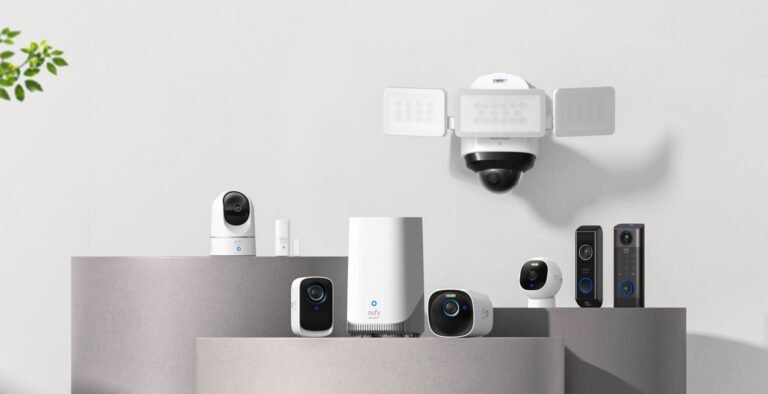Securing your home is a top priority, and one of the most effective ways to do this is by installing security cameras. But how many security cameras do you actually need? This question can be challenging, as the answer depends on various factors such as the size of your property, the areas you want to cover, and specific security concerns. In this comprehensive guide, we will explore the optimal placement of outdoor security cameras, determine the number of indoor cameras you might need, and discuss the factors that influence the total number of cameras required for your home. By the end of this article, you’ll have a clear understanding of how to create a robust security camera system tailored to your needs.
Table of Contents
Where to Install Security Camera Outdoor
Installing security cameras outdoor is crucial for enhancing the security of your property. Proper placement ensures maximum coverage and effectiveness. Here are key locations to consider:
Front Door
The front door is a primary entry point and should be monitored closely. Install the camera where it can capture clear footage of anyone approaching the door. Ensure the camera is angled to cover the entire entryway, including the doorstep, for comprehensive coverage.
Back and Side Doors
Back and side doors are common entry points for intruders, so it’s essential to install cameras at these locations as well. Similar to the front door, place the cameras high enough to prevent easy access. Additionally, ensure these areas are well-lit to enhance camera performance during nighttime.
Driveway and Garage
Monitoring your driveway and garage is important for keeping an eye on vehicles and anyone approaching them. Position the camera to cover the entire driveway and garage entrance. Using cameras with motion detection can alert you to any unusual activity around your vehicles, providing an added layer of security.
Backyard
Install cameras to monitor gates and the backyard perimeter to ensure comprehensive coverage. Focus on activity areas where people are likely to be, such as patios, pools, and play areas. Adequate lighting is crucial for capturing clear footage at night, so make sure these areas are well-lit.
Windows and Ground-Level Access Points
Windows and other ground-level access points are potential entry points that should be monitored. Place cameras to have a clear view of these areas, adjusting the angle to avoid obstructions like trees or shrubbery. Using tamper-resistant mounts and securing the wiring can help prevent tampering.
Overlooking Property Boundaries
Installing cameras at the edges of your property allows you to monitor anyone approaching from outside. Position them high enough to get a wide view of the surrounding area while ensuring compliance with local laws regarding the surveillance of public or neighboring properties.
By strategically placing your outdoor security cameras in these key locations, you can create a comprehensive surveillance system that deters intruders and provides peace of mind.
How Many Indoor Security Cameras Do I Need?
Ensuring comprehensive home security requires strategically placing cameras in key indoor areas.
Bedrooms
Installing cameras in the bedrooms can be sensitive due to privacy concerns, but in certain situations, such as monitoring a baby’s room or a child’s room, it can be beneficial. One camera per bedroom should suffice to cover the entire area. Position the camera to avoid direct views of sleeping areas for privacy while still monitoring entrances and key areas.
Living Room
The living room is often a central area in a home and can benefit from comprehensive security coverage. One to two cameras are generally recommended, depending on the size of the room. Place cameras in corners or on shelves to get a wide view of the room, ensuring entrances, windows, and high-traffic areas are covered.
Hallways
Hallways serve as crucial pathways within a home and can be strategic locations for security cameras. One camera per hallway is typically enough. Position the camera at one end of the hallway to capture the entire length, monitoring movement between rooms effectively.
Factors Affecting the Number of Security Cameras
Determining the optimal number of security cameras for any property involves evaluating several key factors. Here are the most important considerations:
1. Property Size and Layout
The dimensions and structure of a property significantly influence the number of security cameras required. Larger properties with complex layouts, including multiple entry points and blind spots, will need more cameras to ensure comprehensive coverage.
2. Surveillance Objectives
The purpose of surveillance plays a crucial role in determining the number of cameras. Whether the goal is to monitor entry and exit points, cover wide areas, or focus on specific high-risk zones, the objective will dictate the placement and quantity of cameras.
3. Camera Capabilities
Advanced camera features such as wide-angle lenses, high-resolution imaging, night vision, and motion detection can reduce the total number of cameras needed. Cameras with superior coverage and capabilities can monitor larger areas effectively.
4. Budget Constraints
Financial considerations often impact the number of cameras installed. Budget constraints may limit the number of cameras, necessitating a strategic placement to maximize coverage with fewer devices.
5. Regulatory Requirements
Local laws and industry regulations can mandate specific security measures, including the number of cameras required. Compliance with these regulations ensures that surveillance systems meet legal standards and provide adequate security.
By considering these factors, property owners and security professionals can determine the optimal number of security cameras required to achieve effective surveillance and security.
Conclusion
Strategically installing security cameras both outdoors and indoors is essential for ensuring the safety and security of your property. By carefully choosing locations such as entry points, driveways, backyards, and key indoor areas like living rooms and hallways, you can create a comprehensive surveillance system. Consider factors such as property size, surveillance objectives, camera capabilities, budget constraints, and regulatory requirements to determine the optimal number of cameras needed. With the right setup, you can deter intruders, monitor activities effectively, and enjoy peace of mind knowing your home is well-protected.

